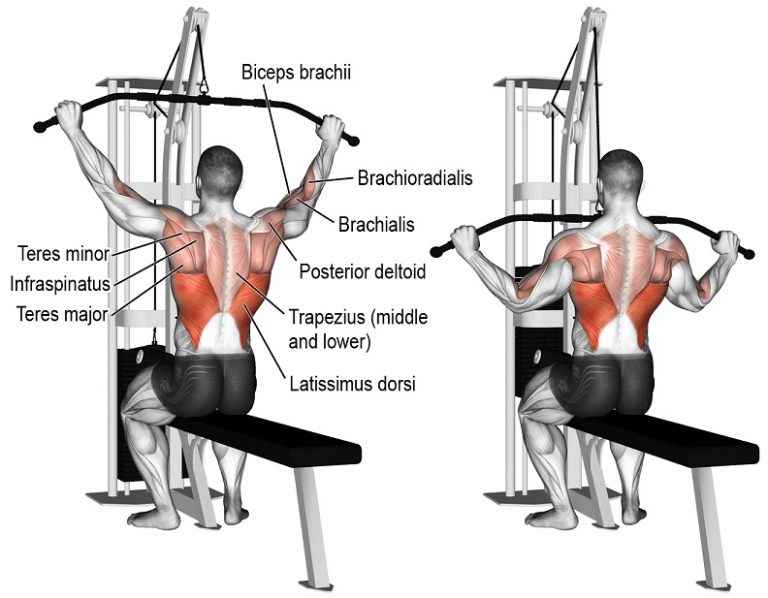


There are three main muscle groups in the upper back: the trapezius, latissimus dorsi (lats), and erector spinae. Due to their size, strength and involvement in numerous motions of the body, exercising the core, including the lats, along with being sure to stretch them enough are critical for maintaining range of motion and a healthy spine into older age.
#Lat and tricep stretch pling plus#
Rotation or twisting movements in the back, plus raising the arms overhead, both engage these muscles, making them important for upper body strength, balance and general coordination. The bottom of the lats extend to the tops of glutes, near the tailbone and lower back. Since the lats are connected to the arms and upper back, they help hold the back upright, can play a part in preventing slouching and are used to maintain good posture. They help connect the spine to the arms/upper extremities and support overall strength and stability of the whole trunk.

The two latissimus dorsi muscles located in the center of the back are large, flat, generally strong muscles that are posterior (next to) to the trapezius muscles in the arms.

According to a report in the Journal of Orthopedics, “Because the latissimus dorsi connects the spine to the humerus, tightness in this muscle can manifest as either sub-optimal glenohumeral joint function (which leads to chronic shoulder pain) or tendinitis in the fasciae connecting the latissimus dorsi to the thoracic and lumbar spine.” ( 1)Ĭonsidering the main function of the latissimus dorsi muscle is to assist in movement of the arms and protection of the spine, just about everyone can benefit from incorporating lat exercises into their day to help with improving balance, stability, range of motion and upper body strength. However, it’s common even for athletes to wind up developing tight latissimus dorsi muscles due to overuse or too little stretching - considered to be a major cause of both chronic shoulder and lower back pain.įor those who aren’t already performing strength-training moves, the lats and back are key areas to focus on. If you ever perform pulldowns, rows or lifting exercises for your shoulders using a resistance band or machine, chances are you’re already actively engaging and strengthening your lats. The lats are involved in other important functions beyond shoulder extension as well, including internal rotation of the torso and supporting core stability. As extensor muscles, the lats primarily have the job of helping to lift the arms up as they lengthen and reach. The Supine Kettlebell pullover is an exercise that involves lying flat on your back and lifting a kettlebell over your head.The latissimus dorsi muscles - commonly just called “the lats” - are the two biggest, broadest muscles in your back and, overall, one of the largest muscle groups in the whole body. Loading these ranges of motion trains the athlete’s nervous system to control this new mobility and be able to use it. They have always had that mobility, but their body had the “emergency brake” on limiting their ability to access that mobility. Typically, in these cases, the athlete isn’t training their body to control the ranges of motion that they have “acquired”. Sit back until you feel a gentle stretch of your Lat.įar too often, an athlete will foam roll, stretch, and see a transient improvement in their mobility, but then things revert right back to where they were minutes, hours, or a day previously. Use your other hand to stabilize the scapula on the rib cage.


 0 kommentar(er)
0 kommentar(er)
